Bold Is... PIONEERING BRAIN HEALTH FOR THE FUTURE
Researchers at UT San Antonio are revolutionizing brain health by prioritizing human well-being and safety. From uncovering new treatments for neurological disorders to enhancing brain function and recovery, UT San Antonio researchers are paving the way for breakthroughs that improve lives and society.
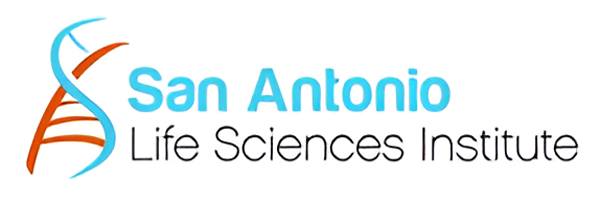
The San Antonio Life Sciences Institute (SALSI) drives innovation in biomedical and biotechnology research while offering outstanding student learning opportunities. SALSI’s transdisciplinary collaborative R&D and support for bold grant opportunities has attributed to the growing biomedical sector work in the region.
Top 10 ways San Antonio is shaping Texas biomedical research
From Neurons to Policy: Investing in Brain Health Research for Texas
The Brain Health Consortium (BHC) is a multidisciplinary and collaborative research powerhouse dedicated to unveiling the inner workings of the brain to identify novel strategies to prevent disorders, promote development and restore and improve brain function. Using advanced technology, BHC explores brain mechanisms and also supports and trains the next generation of brain health researchers and innovators.
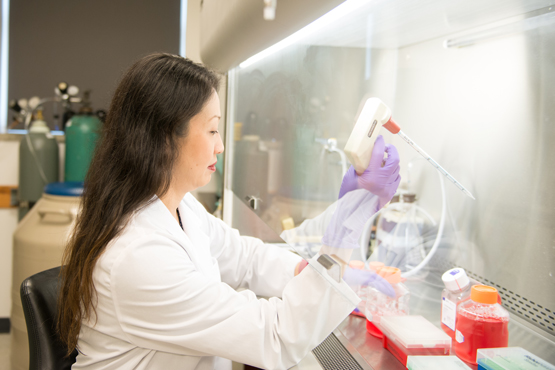
Applying the Disease-in-a-Dish Model
This emerging technology re-creates the mechanisms behind disorders using the patient’s own stem cells to accelerate discoveries which lead to cures. Dr. Melanie Carless applies this model to study astrocytes involved in Alzheimer’s disease, making crucial progress in the development of prevention and treatment methods.
Pursuing Treatments for Epilepsy with Brain Organoids
BHC Director Jenny Hsieh is creating non-human primate brain organoids — small pieces of brain tissue grown in a laboratory — to uncover the points of origin of epilepsy, which could lead to the development of life-changing treatments.
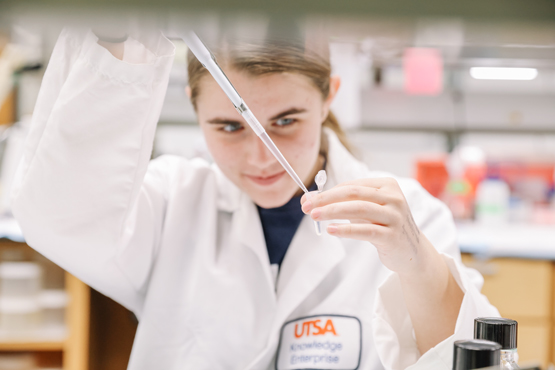
Using AI to Uncover Neural Networks
Awarded $2 million by NSF, Dr. Fidel Santamaria’s research involves using computational and AI models to understand better how neurons operate and interact. This research contributes to both a foundational understanding of the brain and critical advancements in AI.
Understanding chronic pain
UT San Antonio and UT Health San Antonio researchers Lindsey Macpherson and Armen Akopian are collaborating to investigate the pain from temporomandibular joint disorder (TMJD) by exploring how certain nerve fibers function and where they're found in the joint. The project, with funding from NIH, aims to answer longstanding questions about this type of chronic pain by studying these nerves in the muscles and tissues around the jaw joint in both healthy and TMJD-affected mice and humans. One goal of this work is to develop good animal models for TMJ disorders, including chronic pain — and ultimately reduce the need for opioid treatment of joint disorders.
.
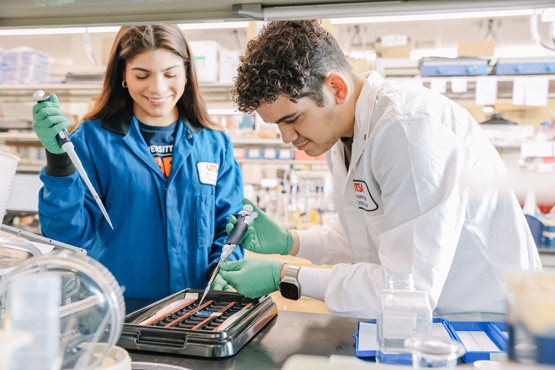
Developing Tools to Combat Traumatic Brain Injury
In partnership with the Southwest Research Institute (SwRI), UT San Antonio researchers Marzieh Memar and Morteza Seidi are developing techniques to detect traumatic brain injury (TBI) by analyzing breath for specific biomarkers. The research utilizes a gas sampling system originally developed to sample and analyze gases in the atmospheres of other planets. This non-invasive and cost-effective diagnostic method could reduce preventable deaths from concussions and other TBIs.
Protecting Patients’ Vision After Trauma
With funding from TRC4, Marissa Wechsler is exploring new approaches to treating traumatic optic neuropathy (TON), a vision-threatening condition that can be caused by trauma to the head or eye. The project aims to develop an injectable drug delivery system for various therapeutic agents. This system would rapidly screen optimal therapeutic combinations and inject nanoparticle-loaded gels that search for oxygen free radicals and other reactive oxygen species before creating the appropriate therapeutic agents to target different aspects of traumatic optic neuropathy.
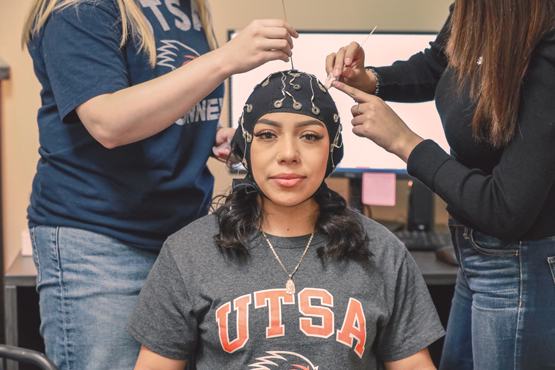
Using AI to Improve Care for Children with Autism
With $740,000 in funding from THECB, Drs. Leslie Neely and Adel Alaeddini are partnering with CHRISTUS Children’s hospital on an interdisciplinary project leveraging advanced AI for immediate and personalized caregiver coaching to support parents of children with autism. The team already received funding from NSF to create a smart and connected community for coordinated responses to escalated behavior events in autistic individuals using an IoT-enabled generative AI platform, providing first responders with access to evidence-based de-escalation procedures
Bridging the employment gap for adults who are neurodiverse
UT San Antonio researchers John Davis and Leslie Neely, working in partnership with Morgan’s Multi-Assistance Center (Morgan’s MAC) and Southern Methodist University, received a $9 million grant from the U.S. Department of Education to address the long-standing challenge of getting neurodiverse adults into the workforce. Participants in the project will explore and shadow available jobs, analyze specific roles to create an “employee blueprint,” train for the role, begin working and receive follow-up support. The participants will also learn with AI training simulations to become fully prepared for the tasks and interactions that the job requires.
Bold Is... LEADING THE CHARGE OF CHANGE
Meet Dr. Jenny Hsieh
Professor and Director of the Brain Health Consortium
Recruited to San Antonio to start a world-class research lab, Dr. Hsieh and her team are making scientific discoveries to help those suffering from brain diseases.
